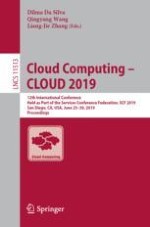2019 | Book
Cloud Computing – CLOUD 2019
12th International Conference, Held as Part of the Services Conference Federation, SCF 2019, San Diego, CA, USA, June 25–30, 2019, Proceedings
Editors: Dilma Da Silva, Qingyang Wang, Liang-Jie Zhang
Publisher: Springer International Publishing
Book Series : Lecture Notes in Computer Science
